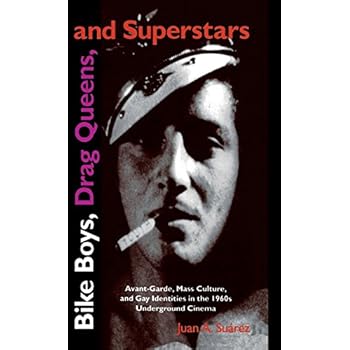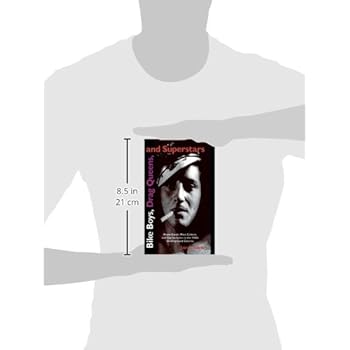Bike Boys, Drag Queens, and Superstars: Avant-Garde, Mass Culture, and Gay Identities in the 1960s Underground Cinema
Category: Books,Politics & Social Sciences,Social Sciences
Bike Boys, Drag Queens, and Superstars: Avant-Garde, Mass Culture, and Gay Identities in the 1960s Underground Cinema Details
From Library Journal Suarez (English, Univ. of Murcia, Spain) opens by juxtaposing Clement Greenberg and Frankfurt school thinkers with a counter-tradition that uses mass images in an effort to integrate art and everyday life. This later tradition becomes the springboard for the author's description of America's underground culture and its role in the production of gay identities. The text's second phase counterpoises Jack Smith's desire to "avoid entering the cultural market as commodity" with Warhol's insatiable desire to publicize everything as art and all art as commerce. The text's chief weakness is the unnecessary and unconvincing attempt to link the European avant-garde with American underground culture. Nonetheless, mainstream cinema's current explosion of transvestite film and Mary Harron's just-released I Shot Andy Warhol make Suarez's generally well-written, thoroughly researched, and engaging text a timely addition to both cultural and film studies.?David Seelow, SUNY Coll. at Old Westbury, Long Island, N.Y.Copyright 1996 Reed Business Information, Inc. Read more From Kirkus Reviews A passingly intelligent but disjointed critical examination of the gay ``underground'' cinema movement of the 1960s. Drawing mainly on the work of Kenneth Anger, Jack Smith, and Andy Warhol, Su rez (English/Universidad de Murcia, Spain) attempts to frame a slightly new conception of the historical relationship between the avant-garde and mass culture. Instead of a merely oppositional relationship, he sees, especially in these gay underground movies, a dialectical (love-hate, to the layperson) dynamic, as the filmmakers simultaneously embrace pop culture and critique it. For example, in Scorpio Rising, Anger both celebrates motorcycles, movie stars, and doo-wop songs and critiques them as emblems of mass culture's violent, fascistic potential. Su rez also details how gay filmmakers have expropriated images from the straight world and given them a gay reading, with drag queens being the classic example. But before Su rez can get to these ideas, he feels compelled to labor us with a 50-page history of the European avant-garde, freighted with enough stale Parisian jargon to fuel the entire Yale English department. Then there is an extended, discursive history of the American underground. In fact, the individual filmmakers, although the ostensible subject of the book, are treated almost perfunctorily. Su rez has too many other agendas to satisfy. Like the films it sometimes analyzes, flashes of brilliance amidst high and low pretentions, pastiche, and pother. (14 b&w photos) -- Copyright ©1996, Kirkus Associates, LP. All rights reserved. Read more See all Editorial Reviews

Reviews
It is difficult to determine where to begin addressing a review as contradictory and pointless as the one offered by Kirkus of Suarez's exciting new focus on kitsch, camp, and fetishism in the Gay Underground Cinema of the the 60's.To begin with, Kirkus misses or entirely avoids recognizing that this "slightly new conception" of the history of this cinema is an immanently Queer one, fixing as it does on those aesthetic elements which even most theorists of the avant-garde would have preferred not to let out of the closet. The Kirkus review fails to acknowledge how and why Saurez's reassessment of this tradition bears upon the object of this inquiry-- why Peter Burger's notion of the avant-garde as a rejection of decadent aestheticism is particularly problematic for the queer underground-- why Clement Greenberg's derogation of kitsch cannot possibly account for this cinema-- how Theodor Adorno's strictly negative dialectic fails to record the more positive relations established between the avant-garde and mass culture.Though Kirkus seems to regard the first fifty pages of Suarez's book as pointless, I see them as absolutely essential. Without the context of these earlier notions of the avant-garde, Suarez's formulations would seem to have come out of thin air-- devoid of any relation to those earlier discourses formed and informed by particular socia land ideological circumstances. Instead, Suarez not only offers a new account, but also reveals how and why a number of elements particularly important to the study of Smith, Anger, and Warhol have been systematically overlooked in the theory which precedes him. Ideas never come out of thin air; it is difficult to understand how the detailed framing of a discursive context could be a waste of time.This rebuttal itself would be meaningless if the Kirkus review hadn't preceded it.





